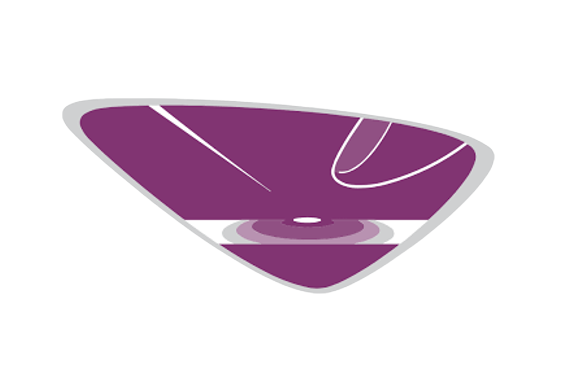Cost accounting Wikipedia
You can use it to understand what creates the most value for your customers and how you can continuously improve. Cost accounting allowed railroad and steel companies to control costs and become more efficient. By the beginning of the 20th century, cost accounting had become a widely covered topic in the literature on business management. The Financial Accounting Standards Board (FASB), under the aegis of the Securities and Exchange Commission (SEC), establishes financial accounting rules in the United States.
Understanding how costs affect the company is important for any small business owner who wants to find their break-even point. Hence, using face value costs may not be enough to accurately show how much the company has incurred in the production of an item. The main aim of marginal costing is to determine the break-even point during production. Production reaches a break-even point when the total revenue of production equals total production costs. As a business owner, knowledge of your business accounting can help you reduce and eliminate your costs, and help boost productivity.
Minimize Cost Accounting Efforts With Accounting Software
The company has to pay $2,000 per month to cover the cost of the lease, no matter how many products that machine is used to make. Cost accounting helps businesses understand where their money is being spent and how this expenditure affects their bottom line. It can be used to set pricing models, manage budgets, allocate resources more efficiently, identify areas of potential savings, and compare performance against competitors. A number of costing methods and techniques are used for costing products, cost control, and managerial decisions. It is also worth noting that cost accounting collects data both in monetary and non-monetary terms. In turn, these data are compared to pre-established standards and budgets to exercise management control over the company’s operations.
- Labor refers to any wages to employees which relate to a specific aspect of producing products or delivering services.
- Some of these costs are not necessarily avoidable though, and the level of commitment to them can decide the success of the business.
- More broadly, costing provides a solid foundation for the efficient and smooth functioning of the enterprise as a whole.
- Cost accounting plays a crucial role in strategic decision-making by providing accurate cost data and insights.
- For example, the use of cost data can guide the introduction of a new product line, lead to the identification of unused capacity, or highlight expansion opportunities.
Understanding fixed costs also helps businesses plan their budget and financial projections effectively. Administrative expenses, such as salaries of support staff and office supplies, are also indirect costs that contribute to the smooth running of a business. Understanding and managing indirect costs is crucial for businesses to maintain profitability and financial stability. It is generally used in manufacturing businesses, where it helps to track actual production costs and compare them to the costs that were originally expected. It’s called variance analysis, the difference between standard and actual numbers. Additionally, cost accounting can be used to track the profitability of individual products or services.
Price Determination
Companies can also use project accounting to figure out which projects add the most value to the company. The biggest benefit of lifecycle costing is foresight, making it an important tool for capital budgeting. With it, owners can sum up the total cost of owning and using an asset and reduce it to its present-day value. It is also important in situations where the opportunity cost of investing in a business opportunity has to be calculated. Life cycle cost accounting (LCCA) is an accounting technique that calculates the total cost to be incurred over the whole life of an asset.
What Are the Types of Cost Accounting?
Some of these costs are not necessarily avoidable though, and the level of commitment to them can decide the success of the business. Cost accounting can give your business detailed insight into how your money is being spent. With this information, you can better budget for the future, reduce inefficiencies and increase profitability.
Environmental Accounting
This is so that a company’s management can make better financial decisions, introduce efficiencies and budget accurately. The objective of cost accounting is to improve the business’s net profit margins (how much profit each dollar of sales generates). Different types of cost accounting methods help businesses gain valuable insight into costs, what is the available balance in your bank account identify areas for improvement, and make decisions to improve financial performance. It assigns overhead costs to products and services that actually use them, which is helpful when multiple products are in play. For example, a business producing skincare items might purchase the same materials for the production of several different products.
What Is Cost Accounting?
The four basic types of cost include direct, indirect, fixed, and variable costs. Knowing the fundamentals and how each can impact a company’s bottom line is essential for small business financial management. For example, raw materials and manufacturing supplies are directly tied to actual production. Another example is direct labor; you physically need line workers to assemble a product. Companies that want consistent profits use target costing to manage production costs. With this method, a company researches and evaluates the costs of a process before starting production.
Due to this discrepancy, some companies use a mark-to-market basis to record assets in their financial statements. Lean accounting helps to improve financial management practices within an organization by optimizing production practices. For example, efficient inventory management means only the items needed in the warehouse are kept there. Unlike other costing methods which analyze the profitability of an investment on a period basis, life cycle costing traces cost and revenues over several periods. Companies that use life cycle costing are those that place an emphasis on long-term planning so that their accumulated profits over several years are maximized.

